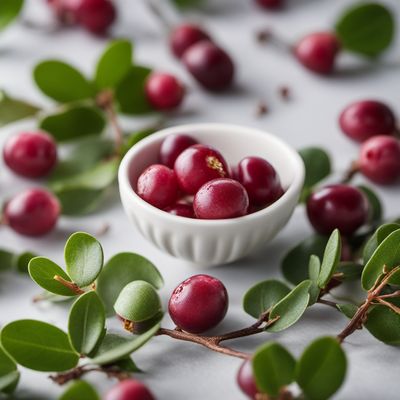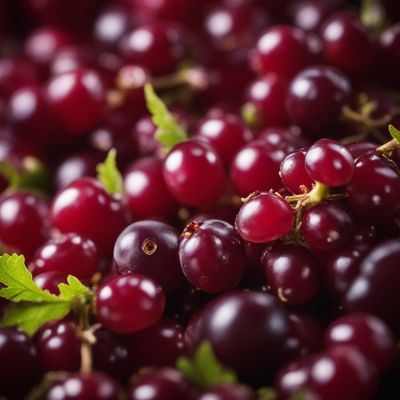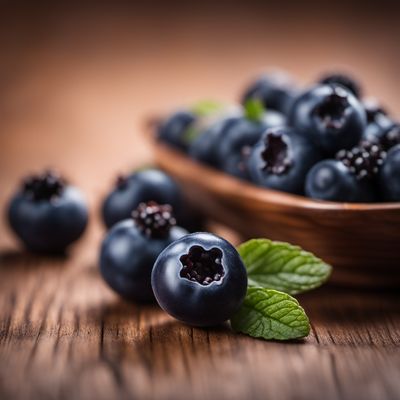
Ingredient
Haskaps
The Marvelous Haskaps
Haskaps are small, oval-shaped berries with a deep blue-purple hue and a slightly tart taste. They have a juicy texture and are often compared to a blend of blueberries, raspberries, and blackberries. These berries are rich in antioxidants and are a delightful addition to both sweet and savory dishes.
Origins and history
Haskaps are native to the northern regions of Europe, Asia, and North America. They have a long history of cultivation in Russia, Japan, and Canada, where they are highly valued for their hardiness and adaptability to cold climates. In Japan, they are considered a symbol of good luck and are often used in traditional celebrations.
Nutritional information
Haskaps are a nutritional powerhouse, packed with vitamins C and K, as well as dietary fiber. They are also a good source of antioxidants, which help protect the body against oxidative stress and inflammation.
Allergens
There are no known allergens associated with haskaps.
How to select
When selecting haskaps, look for plump berries that are firm to the touch and have a deep, vibrant color. Avoid berries that are soft, mushy, or have any signs of mold or discoloration. Additionally, choose berries that have a slight bloom, as this indicates freshness.
Storage recommendations
To prolong the freshness of haskaps, store them in a breathable container, such as a paper bag or a perforated plastic bag, in the refrigerator. They can be kept for up to a week, but it is best to consume them as soon as possible for the best flavor and texture.
How to produce
Haskaps can be grown in a variety of climates, but they thrive in cool, temperate regions. They are relatively easy to cultivate and can be grown from seeds, cuttings, or transplants. Provide them with well-draining soil, ample sunlight, and regular watering for optimal growth.
Preparation tips
Haskaps can be enjoyed fresh as a snack, added to salads, used in jams and jellies, or incorporated into baked goods like muffins and pies. They also pair well with yogurt, ice cream, and cheese. Their vibrant color and unique flavor make them a versatile ingredient in both sweet and savory dishes.
Availability
Haskaps are commonly available in Canada, Russia, Japan, and certain regions of Europe and North America.
More ingredients from this category » Browse all

Bearberries
The Wild Berry Wonder

Juneberries
The Sweet Delight of Juneberries

Native currant
The Indigenous Jewel

Blueberries
Bursting with Antioxidant Power: The Vibrant World of Blueberries

Jostaberries
The Tangy Delight: Unveiling the Secrets of Jostaberries

Golden currant
The Fragrant Spice of Delight

European barberries
Tangy Gems: Exploring the Delights of European Barberries

Huckleberries
The Wild Delicacy: Unveiling the Enchanting World of Huckleberries

Sea buckthorns
The Tangy Treasure of the North

Worcesterberries
The Tangy Delight: Worcesterberries

Ugniberries
The Enigmatic Delight: Unveiling the Secrets of Ugniberries

Serviceberries
The Berry of Abundance